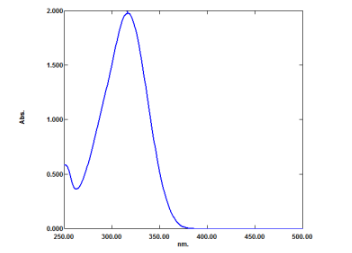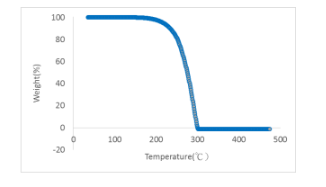Enhanced TDS
Identification & Functionality
- Chemical Family
- Chemical Name
- Manufactured By
- Plastics & Elastomers Functions
- Technologies
- Product Families
- Chemical Structure

Features & Benefits
- Materials Features
- Product Advantages
- With a very strong absorption especially in between 300 and 330nm of the
- UV-spectrum where UV radiation is in particular degradation for PU system..
- Excellent compatibility with variety of PU polymers.
Applications & Uses
- Compatible Polymers & Resins
- Recommeded Applications
Eversorb® 57 is particularly recommended for excellent light stability to a number of PU system during their use.
Properties
- Physical Form
- Appearance
- Yellowish liquid
- Typical Properties
Value Units Test Method / Conditions Melting Point 27 - 28 °C - Molecular Weight 282.3 g/mol - - SDS Physical and Chemical Properties
Value Units Test Method / Conditions Solubility in Water (at 20°C) max. 0.1 % - Density (at 20°C) 1.13 g/cm - Vapor Pressure (at 20°C) 1.0X10⁻⁴ Pa - Ignition Temperature min. 400 °C - Flash Point min. 100 °C - Boiling Point min. 400 °C - Melting Point 27 -28 °C - Odor None - - Color Slight Yellow - - Physical Form Liquid - - - Solubility Data
Value Units Test Method / Conditions n-Butyl Acetate Solubility (at 25°C) min. 50 g/100g solvent - Xylene Solubility (at 25°C) min. 50 g/100g solvent - Ethanol Content Solubility (at 25°C) min. 50 g/100g solvent - Water Solubility (at 25°C) max. 0.01 g/100g solvent -
Regulatory & Compliance
- Certifications & Compliance
- Chemical Inventories
Technical Details & Test Data
- UV Visible Spectrum Graph
UV-Vis. Spectrum λmax.=316nm (20ppm in THF)

- TGA scans
5% weight loss: 228°C

Packaging & Availability
Storage & Handling
- Storage Conditions
Eversorb® 57 is somewhat sensitive to hydrolysis, light and heat. This store in tightly sealed containers and protected from light in a cool and dry ventilated environment. Upon longer storage time crystallization could occur. Warming up in a heat chamber (T<=60°C) is recommended.
